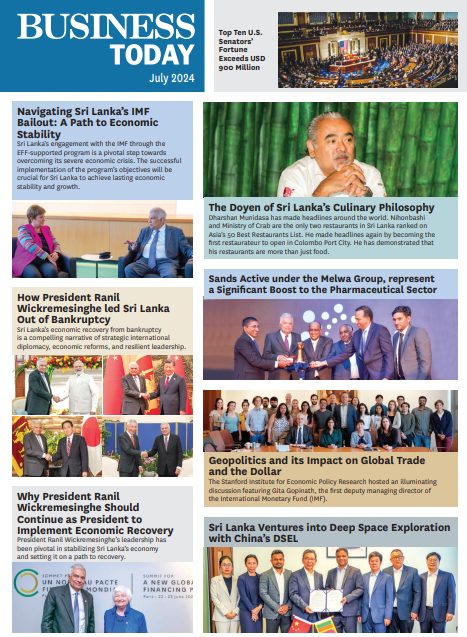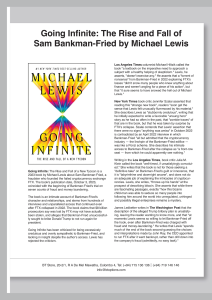
Kalpa Palliyaguru is the Chairman of Mind For Group. Having introduced many novel concepts to the advertising industry in Sri Lanka, he urges the need for the country to realise the importance of digital media. He is concerned that if appropriate policies are not brought forward to govern and protect the advertising industry, there would be no industry to talk of in the years to come. Hailing from a background in IT, he entered into the communications sector in order to make a difference. He has many campaigns under his belt.
By Udeshi Amarasinghe | Photography Mahesh Bandara and Indika De Silva
Who is Kalpa Palliyaguru?
People can define me as an entrepreneur. Today, I am a businessman, prior to this I was a sportsman. I’m also a cricket commentator and a lyricist and my interests are many. However, more than anything, I’m a very humble person and a person who is hungry for success. I want to take the Sri Lankan identity to the rest of the world, because it is something that I have in my blood after living overseas. I want to position Sri Lanka among the best countries in the world, showing our strengths in terms of business and other industries. We do not have that strength yet and so far we are only famous for tea, gems and cricket.
Can you tell us how and when you entered the advertising industry?
After I came back from Australia, in 2003, I perceived a huge gap in the advertising market in terms of a 360 degree agency. When you look at the advertising agency model, there are various models such as creative agencies, media and PR. But we thought to have a one stop shop where we can cater to all segments and started our journey in November 2003, ten years ago. More than creativity, we believe in strategy. If you do not have a proper strategy in place, even if you come up with the most creative idea, you won’t be able to achieve your targets and the execution will be difficult. The strategy is a must and today we operate as a 100 percent Sri Lankan, strategy driven advertising agency.
What are your thoughts on the current state of the advertising industry in
Sri Lanka?
Integrated communication campaigning is something that we do not practice in Sri Lanka as our people still believe in the traditional marketing theories. This has something to do with the lack of awareness, education and understanding regarding new trends.
IT is the bottom line and therefore, when we do campaigns as a country, prominence given to digital media is low as people don’t believe in digital media as yet. You will see a few web banners here and there, but we still do not carry out digital or internet based campaigns in Sri Lanka. We do many below the line (BTL) activities such as campaigns on TV, Radio and in the press.
However, if you take other parts of the world such as Australia or even India, most of their campaigns are based on internet and mobile.
Currently, people associate with their mobile and computers more than their families. Though IT penetration in
Sri Lanka is growing, we are still not focusing and the truth is even though we talk about integrated communications when it comes to campaigns there is no integration. You still only see the presence of traditional media.
What do you suggest then?
Data mining on social media is one of the best ways that advertisers can use to target their customers with pinpoint accuracy. A person’s age, gender, race, religion, education, relationship status, e-mail ID, mobile phone number and geographic location can be found out quite easily. By analysing people’s ‘Likes’ and other social media behaviour, it is possible to determine what they do – including what they buy, eat, drink, read, watch, travel to, their health concerns, political views, personality profile and web. Right now, there are invisible and detailed online databases being created on all of us by social media, which can be powerful and useful information to the advertising industry – both digital and mainstream. In fact, special APPS have been developed for this very purpose – of providing advertisers with in-depth analyses of customer demographics and psychographics.
As an advertising agency how would you convince clients to use digital media in their campaigns?
The client takes the decision at the end of the day and if he does not believe in the new trends it is very hard to convince them. We have 1.6 million facebook users in Sri Lanka, and it is growing, in 2012 it was somewhere around 1.2 million, in May 2013 we have reached 1.6 million. If we look at the age group between 13 to 17 years there are about 400,000 children. Even if we leave them out we still have 1.2 million facebook users. That means if you do a campaign on facebook, you can reach 1.2 million in a flash. Is there any other medium in the world today that can reach 1.2 million? With a 20 million population, can you reach 1.2 million with a TV ad? No TV campaign can do that. Our community and top management are not willing to accept that, since they are not used to the technology they do not believe in it.
How accurate is the targeting of customers through social media?
Social Network Analysis (SNA) can be very useful for analysing Social Media data. This is not just about the number of ‘hits’ or ‘tweets’. It involves complex mathematical formulae on powerful computers to form informed judgment about users, the structure of their relationships, whom they communicate with, whom they influence and are influenced by, etc. ‘Network Centrality’ is the key concept here. In other words it can help identify the ‘Opinion Leaders’, who could play an important role in influencing the others’ purchasing behaviour. ‘Network Centrality’ depends on the person’s number of connections, degree of influence and level of closeness to others.
What will be the future of consumer targeting?
We should be concerned more about targeting methodologies, as that’s where the action is shifting.
For instance, when we target in real time, we can also market in real time and consumers will be able to respond in real time. This will help us adapt our advertising accordingly. Coverage is becoming less important as advertisers become more concerned with customising their messages to each individual.
Why do you think viral marketing efforts have had more failures than successes?
Since it’s hard to predict viewers’ reactions, it is extremely difficult to design material with potential viral success, such as ‘Gangnam Style’. However, using the right approach can help advertisers avoid the major snags involved. In this regard, ‘Big Seed Marketing’ is gaining ground as a viable strategy. For instance, in viral marketing the idea is to spread a few ‘seeds’ and expect other viewers to get ‘infected’ and keep infecting others. If this doesn’t happen, then the effort fails. In ‘Big Seed Marketing’ however, companies spread a much larger number of ‘seeds’ through conventional mass media and back it up with social media advertising. This enhances the chances of going ‘viral’ to a greater extent.
What will be the next shift in digital content?
‘Magnetic Content’ is what comes to my mind. The fundamental objective is to create brand awareness and foster brand loyalty through positive engagement. Conventional advertising works through distraction, by interrupting whatever we are reading, watching or listening to. This can confuse or even irritate us, which is often the case. In contrast, Magnetic Content works on the principle of attraction. It ‘Blurs the line between content and advertising’, weaving together a story across a variety of content styles and media, in an engaging manner. This could include live events, news clips about the product, FAQs, testimonials, 30-second videos, augmented reality games and other brand related material that work seamlessly and synergistically.
How can we make the advertising industry equitable for all?
There are no policies for the advertising industry in Sri Lanka. There are no standards or guidelines to adhere to. Media is a key component of the advertising industry. Today the media business has gone into a level where it is indescribable. People are working on various commission schemes but as an industry we have an understanding and there are certain things that we practiced in order for the industry to survive. But, no one adheres to the simple practices anymore. The country speaks about unity but within the industry there is no unity.
The entire advertising industry consists of about 1,200 people. On the other hand we do not have experienced people because they are leaving the country, which is a major issue. There are certain agencies securing accounts through influence, others by offering very low rates to the client. At the end of the day there is a limit to how much we can reduce our rates because we have our own costs. The industry needs to be united if everyone is to survive. Currently people are doing whatever they want to do because there are no regulations to guide the industry.
It Is Time To Bring In Policies So We Can Protect This Industry Otherwise In My View In Another Five To Ten Years There Will Not Be Any Agencies In
Sri Lanka, Because In The Current Environment Only A Few Can Survive.
At the grass root levels if you tell a person that you are in advertising they think it is all about printing boards. Advertising is all about the industry, but we don’t have any recognition. It is time to bring in policies so we can protect this industry otherwise in my view in another five to ten years there will not be any agencies in
Sri Lanka, because in the current environment only a few can survive. People who work with ethics and values will leave the industry because they cannot run their operations in that way.
There seems to be a monopoly in the industry, do you agree?
Definitely. In the past no one agency would handle multiple clients in the same sector because there is inevitably a conflict of interest. But today certain agencies are handling accounts of clients in the same sector. Where is the interest, where are the ethics and the values? The Government has to intervene. We have the opportunity in this country. Nowhere in the world are you given the opportunity to create an unfair share in the market. We are lucky to have survived so far.
But is it not the clients responsibility as well?
True, currently clients also want to get their work done in the cheapest possible way. Certain clients do not work on strategies and advertising is a strategy driven industry. In
Sri Lanka many people work on the gut feeling, then what happens is they tend to go with the agency that gives the lowest rate. In Sri Lanka the cost of living and operation costs are rapidly increasing. Advertising is an industry where you need certain essential items to run the operation.
If we increase the rate, the client will go for the cheaper option. It is the clients decision but there has to be policies to safeguard the industry and create a level playing field.
You were one of the first people to take Sri Lankan Advertising Agency to another country. What are your thoughts on this? Does Sri Lankan advertising have international potential?
We started our overseas operation in 2006 first in India but we have our digital arm in Australia also now. Our dream was to have an international presence. That is our passion and we will be in many other countries in the future. We were planning to go to the UAE region but unfortunately their economy collapsed but now as they are recovering we can hopefully reach them too. In time to come we will venture into the African region because they are developing very fast.
By spreading our wings we can build a name for our country too but we always move slow and steady.
As a rule we never hire people from overseas to Sri Lanka and the same principle is applied to those countries too. Indians are working in India, Australians are working in Australia and Sri Lankans are working in
Sri Lanka, because we believe that our countrymen know their backyard better than outsiders. If you try to bring outsiders to develop strategies, they won’t understand, they don’t know the pulse of the people. It is very essential to have that understanding.
The Biggest Barrier We Have In Advertising In This Country Is That Sri Lankans Are Not Ready And Don’t Believe In New Technologies… The Entire World Has Transferred From Analog To Digital In 2013.
Sri Lanka definitely has the potential. But you cannot use the same tools that you use in Sri Lanka, instead you have to associate the digital tools to reach the rest of the world. If you move to the far east they use digital media to a great extent, even the press. They do not use big ads, they have the mobile phones to scan and play the video content. They are using advanced software such as colour zip, but Sri Lanka is still not ready for that. The biggest barrier we have in advertising in this country is that we are not ready and we don’t believe in new technologies.
Future plans?
As a group we have moved into media and we have launched M for TV. We have started the channel on a digital platform. It is a youth channel and it is non traditional. We started a news website called noc.lk and we started our web radio called voice of Colombo. We have TV, radio and internet news portal in digital platform. You can see where I’m going. The entire world has transferred from analog to digital in 2013, but Sri Lanka is not ready yet. India has already done the change. As an organisation we are ready, we have a presence in digital platform. M for TV will be online and anyone will be able to watch the channel from their mobile. Though
Sri Lanka is comparatively slow on the change from analog to digital, we are investing in digital.
Finally?
It is time to bring in proper guidelines for the advertising industry and media as well, in one word communication. Sri Lanka is the only country where the advertising industry doesn’t belong to a ministry. To ensure the longevity of the industry this needs to happen soon.







